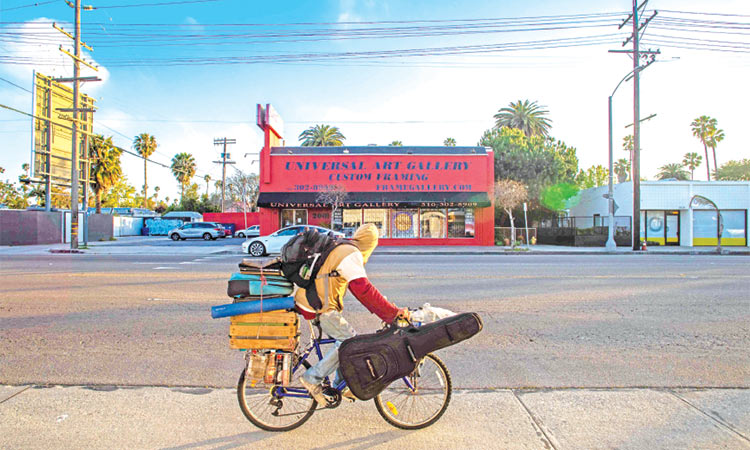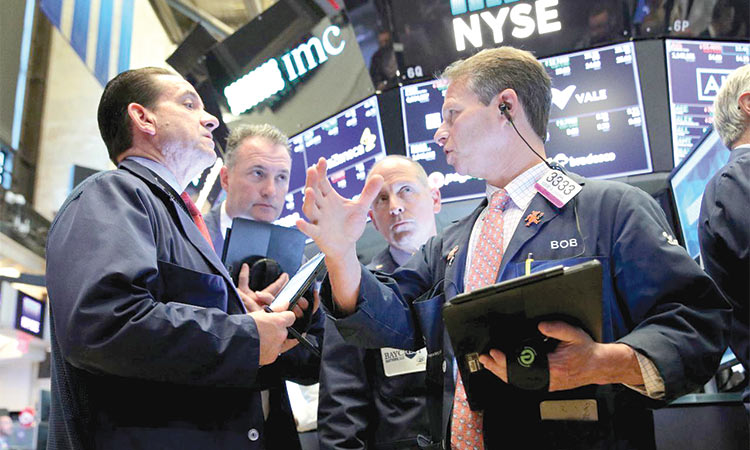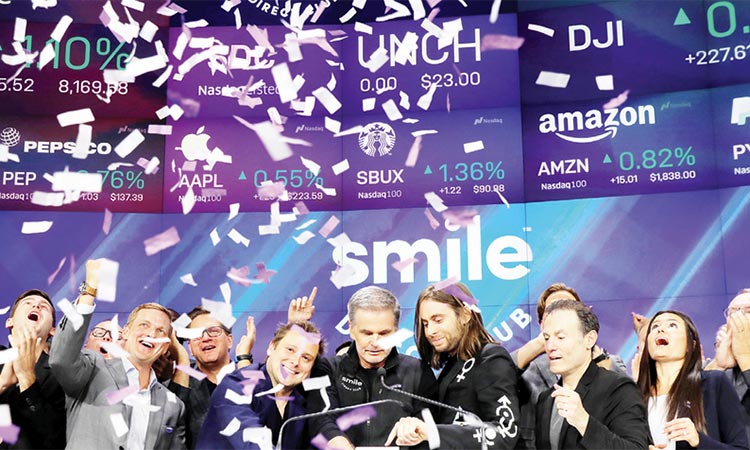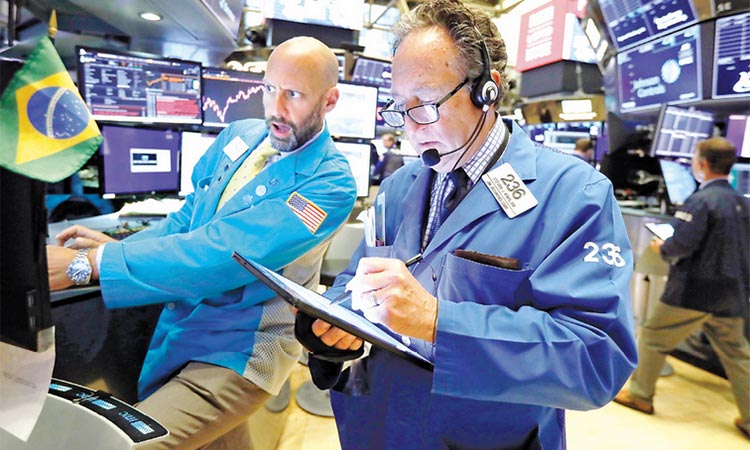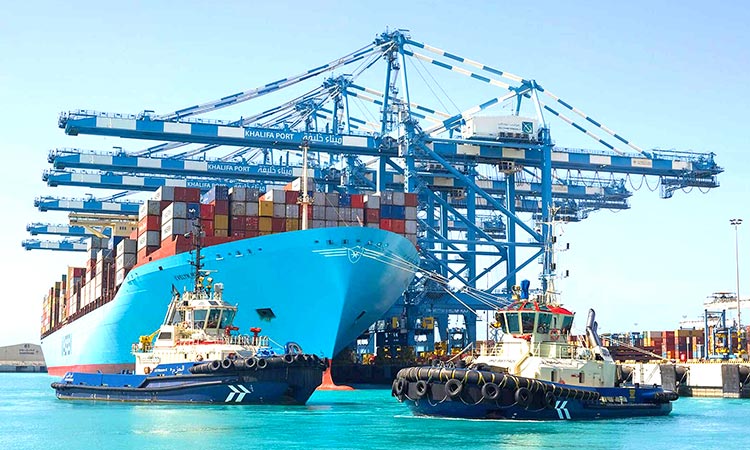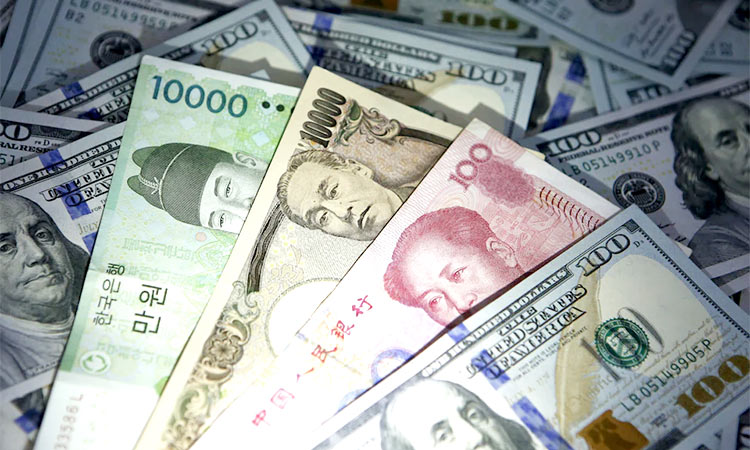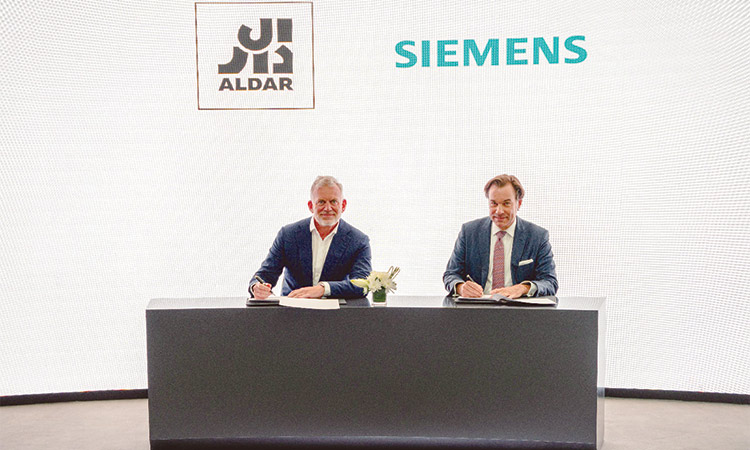New year cheer for global stock markets as rally rumbles on
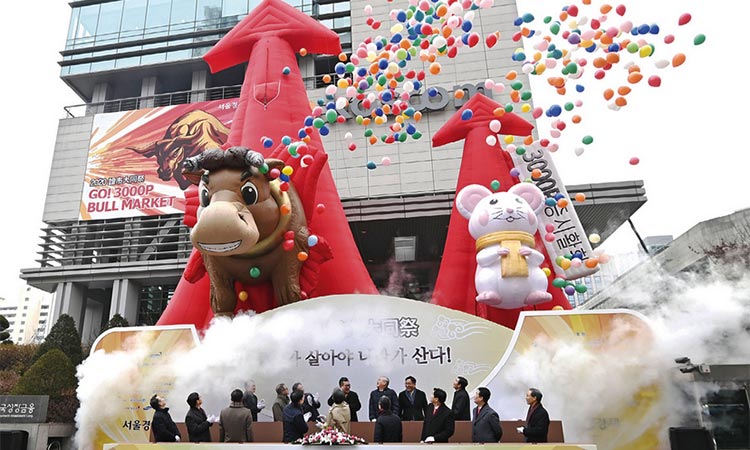
South Korean financial officers attend a ceremony marking the South Korean stock market’s first trading session of the year at the Korea Exchange in Seoul on Thursday. Agence France-Presse
The double lift saw Europe’s main markets jump 0.8% to 1.3%, outpacing Asia’s overnight gains and putting them on course for their best opening session of a year since 2013.
MSCI’s broadest index of world shares added 0.2% to its 24% 2019 surge, which was the fourth best of all time. Higher US futures suggested solid gains on Wall Street too, with S&P 500 e-minis up 0.5%.
“Over a longer-term horizon, we believe global stocks have greater performance potential than global bonds, supported by continued growth and moderate inflation,” Franklin Templeton said in its 2020 outlook, although it stressed it remained cautious for now.
An upward revision to some otherwise gloomy eurozone manufacturing PMI data pushed inflation expectations higher. Germany’s 15-year bond yield briefly turned positive for the first time since July.
The Karachi Stock Exchange roared on Thursday as the index surged 1,081 points and crossed the 42,000-point mark to trade at 16-month highs.
During the day, the Central Directorate of National Savings (CDNS) reduced rates of return on its saving schemes, which provided the market with a much-needed positive trigger and further strengthened investor sentiment. A decline in the rate of return signals an improvement in the economy, hence, the development was welcomed by the market participants.
The KSE-100 index had closed the previous year as one of the best-performing indices in the region with a 10% return. This news particularly bolstered investor confidence and sparked a rally on the very first trading session of the year, which continued for the second day as well.
Sterling dropped to $1.32 and the euro fell back under $1.12. The Aussie and Kiwi dollars took hits and the Japanese yen was little changed at 108.81 per dollar.
After the stimulus shot in Beijing, China’s yuan closed at 6.9631, its strongest finish against the dollar since Aug. 2. The offshore yuan also gained after an initial downward move.
The stimulus − a cut in banks’ reserve requirements − had been expected before January’s Lunar New Year holidays and after Premier Li Keqiang’s pledge last month to provide more stimulus.
“At the end of last year the dollar sold off quite sharply, so we are seeing an easing in some of the dollar selling pressure,” said Lee Hardman, senior FX strategist at MUFG.
“The liquidity squeeze didn’t materialise so that’s contributing to stability in broader financial markets... But the dollar story has been turning negative in recent months, partly because of action taken by the Fed to ease dollar liquidity,” Hardman said, referring to the US central bank’s balance sheet expansion re-launched in October.
China’s blue-chip CSI300 index, one of the world’s best performers last year, rose 1.4%, reaching its highest since Feb. 7, 2018. Hong Kong’s Hang Seng added 1.25%.
Oil prices rose as tensions in the Middle East fuelled worries about supply.
US crude was up as much as 0.3% to $61.28 and global benchmark Brent crude rose 0.2% to $66.15 per barrel, building on a rise that gave oil markets their biggest annual gain in three years in 2019.
Gold, which had benefited from a weaker dollar, was up 0.4% on the spot market despite the US currency’s gains. It last fetched $1,523 per ounce while China-sensitive industrial metal copper climbed towards an eight-month high.
Oil prices steadied after early gains on Thursday as signs of improving trade relations between the United States and China which eased demand concerns and rising tensions in the Middle East provided support.
Brent crude futures rose 7 cents to $66.25 a barrel by 1259 GMT, while US West Texas Intermediate (WTI) crude was unchanged at $61.06 per barrel.
The US military carried out air strikes against Iran-backed Katib Hezbollah militia group over the weekend. Angry at the air strikes, protesters stormed the US Embassy in Baghdad on Wednesday, although they withdrew after the United States deployed extra troops.
“We do not see a threat to Iraq’s crude supply at the moment, other than a small wind down over the first few months of 2020 in line with its OPEC cut agreements,” consultancy JBC Energy said.
“Nevertheless, heightened tensions in the region involving Iranian-backed forces may introduce a certain geopolitical risk,” they added.
Oil was also boosted by optimism that trade talks between the world’s two largest economies will support demand.
US President Donald Trump said on Tuesday the U.S.-China Phase 1 trade deal would be signed on Jan. 15 at the White House.
Agencies
